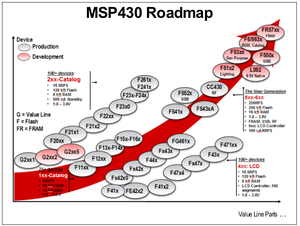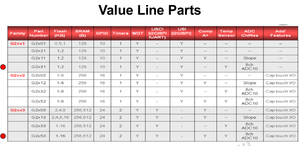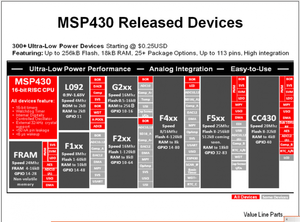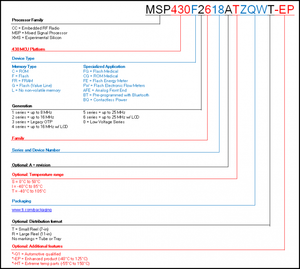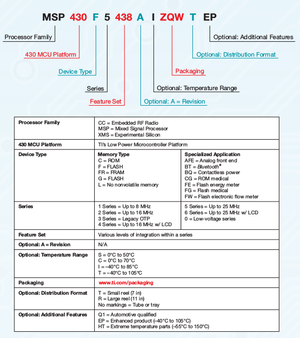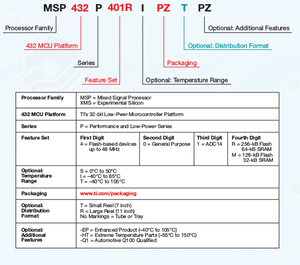„MSP430 MCU” változatai közötti eltérés
| (5 közbenső módosítás ugyanattól a szerkesztőtől nincs mutatva) | |||
| 1. sor: | 1. sor: | ||
== MSP430 MCU from TI == | == MSP430 MCU family from TI == | ||
[[Fájl:msp430_roadmap.png|bélyegkép|balra]] | [[Fájl:msp430_roadmap.png|bélyegkép|balra]] | ||
[[Fájl:msp430_fejleszto_eszkoz.png|bélyegkép|balra]] | [[Fájl:msp430_fejleszto_eszkoz.png|bélyegkép|balra]] | ||
| 9. sor: | 10. sor: | ||
http://www.ti.com/lit/sg/slab034ad/slab034ad.pdf | http://www.ti.com/lit/sg/slab034ad/slab034ad.pdf | ||
== MSP430G2553 launchpad == | |||
=== 32khz-crystal === | |||
Load capacitance !!! | |||
http://www.msp430launchpad.com/2012/03/using-aclk-and-32khz-crystal.html | |||
<font style="text-decoration:line-through;">For example, the LaunchPad uses 12pF capacitors to load the crystal we just installed, yet many crystals require 22pF.</font> | |||
Edit: This statement is actually incorrect. Another big thank you goes out to Jens-Michael for pointing it out to me. Thanks for reading! | |||
'''"12pF is the typical load for most crystals I've ever seen. But due to the electric connection, a 12pF load means [there will be 2] 24pF capacitance on each of the crystals sides. Reason is that (seen from the crystal), the two capacitors are in series to each other and parallel to the crystal. […] Subtract the ~2pF pin capacitance of the MSPs pins and you get [two separate] 22pF [for] external capacitors, resulting in 12pF load. The XCAP settings already include pin capacitance and the /2 factor."''' | |||
A lap 2017. május 20., 19:30-kori változata
MSP430 MCU family from TI
http://www.ti.com/lit/sg/slab034ad/slab034ad.pdf
MSP430G2553 launchpad
32khz-crystal
Load capacitance !!!
http://www.msp430launchpad.com/2012/03/using-aclk-and-32khz-crystal.html
For example, the LaunchPad uses 12pF capacitors to load the crystal we just installed, yet many crystals require 22pF.
Edit: This statement is actually incorrect. Another big thank you goes out to Jens-Michael for pointing it out to me. Thanks for reading! "12pF is the typical load for most crystals I've ever seen. But due to the electric connection, a 12pF load means [there will be 2] 24pF capacitance on each of the crystals sides. Reason is that (seen from the crystal), the two capacitors are in series to each other and parallel to the crystal. […] Subtract the ~2pF pin capacitance of the MSPs pins and you get [two separate] 22pF [for] external capacitors, resulting in 12pF load. The XCAP settings already include pin capacitance and the /2 factor."
